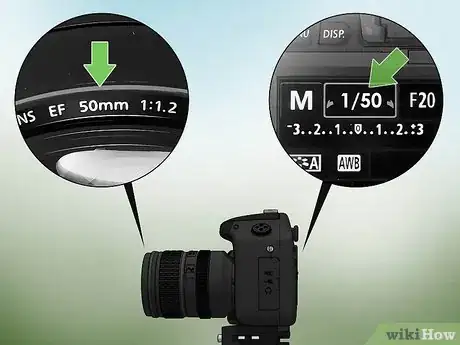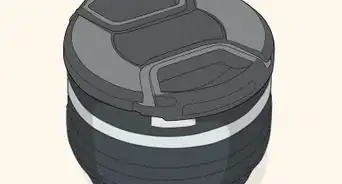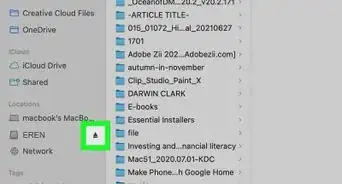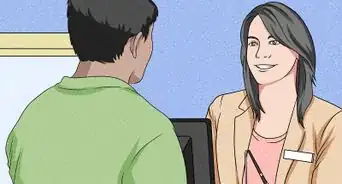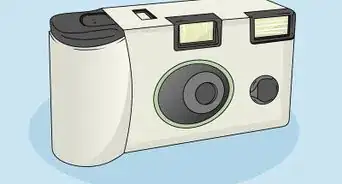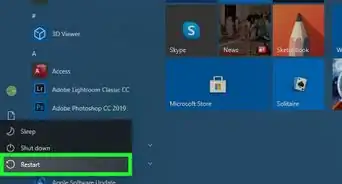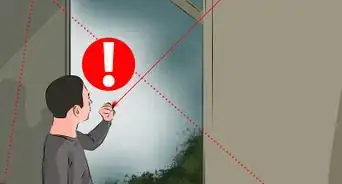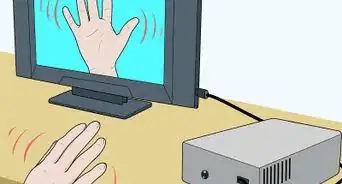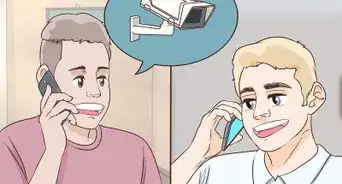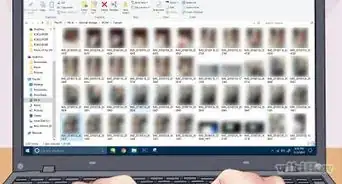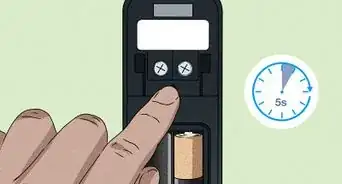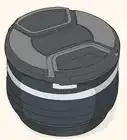This article was co-authored by Stephen Cardone. Stephen Cardone is the COO of NY Headshots, a New York City-based studio that specializes in shooting and producing headshots for individuals and businesses. Stephen has over four years of professional photography experience and over six years of documentary filmmaking experience. Stephen also works extensively as a photographer at NY Headshots. His work includes events, environmental photography, as well as headshots for actors, models, and corporate. He holds a BA in Non-fiction Writing from The New School.
There are 9 references cited in this article, which can be found at the bottom of the page.
wikiHow marks an article as reader-approved once it receives enough positive feedback. In this case, 100% of readers who voted found the article helpful, earning it our reader-approved status.
This article has been viewed 263,023 times.
The shutter speed is the amount of time the shutter allows light to pass through the lens to the film or digital sensor. A correct combination of exposure settings – shutter speed, lens aperture, and ISO sensitivity – will give bright, contrasting pictures. A proper shutter speed will give you the beautiful photos you desire.
Steps
Choosing a Shutter Speed
-
1Pick a speed that won't blur when shooting still objects. The main thing you want to do when you take a picture is eliminate camera shake. Use a faster shutter speed to avoid camera shake blur. Try at least 1/60 for this type of photo. If you have steady hands, 1/30 may produce a good picture.[1]
- For this situation, a change in shutter speed has essentially no effect (other than on overall exposure level) unless something moves enough during the exposure to smear it by at least a pixel width. Even then, it will only make the picture a little soft unless something moves enough to smear it across many pixel widths.
- An image-stabilizing lens or camera can let you hold the camera a stop or two slower, as can careful holding technique.
- Setting the camera on something sturdy like a tripod eliminates camera shake, especially when you choose a slower shutter speed.
-
2Choose a fast shutter speed if you want to freeze movement. Determining if what you want to photograph is still or in motion helps you choose a shutter speed. If you want to photograph something that is moving, you need a fast shutter speed. For instance, you'd use a fast shutter speed to capture dancers, musicians, or even public speakers who move around a lot.[2]
- Use 1/500 for general photography of everyday events, sports, and subjects.
- Use 1/1000-1/4000 when shooting subjects that are extremely fast and up close.[3] 1/1000-1/2000 works well when photographing birds. 1/1000 works well when taking photos of cars.
Advertisement -
3Use a slow shutter speed to catch motion blur. When you take a picture of something moving, a slow shutter speed will catch the movement as a blur.[4]
- For instance, you might use a slow shutter to photograph the taillights of cars, which will create a stream of light.[5]
- You can also use this technique to pan the action by showing a still subject on a moving background. For this, use a shutter speed of 1/15.[6] Follow the subject so that mostly the background, rather than the subject, moves relative to the camera and is blurred.
- You might also use a slow shutter speed to capture an object that's perfectly still, like architecture or an inanimate object in a room with no-one else in it.[7]
-
4Determine the shutter speed based on light. Light affects the exposure of your picture. The source of light determines what kind of shutter speed you will choose. If you allow too much light, your photo will be overexposed. If you let in too little light, it will be underexposed.[8]
- Faster shutter speeds work well with a lot of light.
- Slower shutter speeds are used with less light so that light can enter the camera and illuminate the photo.[9] In situations where you have very low light, you may want to use multiple second shutter speeds.[10] For this, you will need a tripod or something else to stabilize the camera.
- Slow shutter speeds can be used at night. This will give you light trails, like from cars or fireworks. Try 2-30 seconds if you want to attain this effect.[11]
- For getting an action shot in a dark area, increase the ISO sensitivity and choose a slow shutter speed. Use an external flash, and combined with the slow shutter speed (like 1/250), you can freeze the motion.[12]
Understanding Camera Shutter Basics
-
1Understand shutter and shutter speed. The shutter is the device in a camera which obstructs light to the sensor. When the camera fires, the shutter briefly opens to expose the camera sensor to a controlled amount of light. The shutter then closes, obstructing the light again.[13]
- Shutter speed is the time the shutter is open. This means it is the length of time a camera's image sensor sees the scene. This is usually a small fraction of a second.
-
2Know how shutter speed is measured. Shutter speeds are measured in fractions of seconds. These times range from 1/8000 to several seconds long. Speeds of 1/60 or faster are the most commonly used speeds.
- Anything below 1/60 may result in camera shake, which causes blurring on the picture. You will need to use a tripod if you use slower speeds.[14]
- Typically only the denominator is marked on the camera. For example, "125" means 1/125 second.
- Some cameras allow you to take photos at a shutter speed in full seconds, such as 1, 2, or 10 seconds. This is used for low light photography and a lot of movement.[15]
-
3Learn the difference between fast and slow shutter speeds. To know which shutter speed you should use in a situation, you first have to know what a fast and slow shutter speed is. Generally, 1/60 is the base shutter speed that marks the boundary between fast and slow.
- Denominators larger than 60, like 1/125, 1/500, or 1/2000, are fast shutter speeds. Denominators below 60, like 1/30 and 1/15 are slow.
- Shutter speeds that are full seconds long, like 1 or 2 seconds, are very slow shutter speeds.[16]
-
4Find your shutter priority shooting mode. Most cameras have a shutter priority setting. This mode will allow you to choose the shutter speed based on the picture you want to take while the camera matches the aperture so you get the best exposure.[17]
- On most cameras, the shutter priority setting is labeled "S." On some cameras, like Canons, this setting is labeled "Tv."
- You can shoot in aperture mode and let the camera choose the shutter speed while you set the lens aperture.
- In manual mode, labeled "M," you set the shutter speed and aperture.[18]
-
5Think about focal length. The focal length of your lens can cause camera shake. Because of this, you need to take the focal length into consideration when choosing a shutter speed. If you have a long focal length, you will probably want to use a faster shutter speed.[19]
- The shutter speed denominator should be at least equal, if not larger, than the focal length. For instance, a 50mm lens should be casually handheld at speeds no slower than 1/50 second; a 200mm lens should be no slower than 1/200.
Expert Q&A
-
QuestionWhen should I use slow vs fast shutter speed?
 Stephen CardoneStephen Cardone is the COO of NY Headshots, a New York City-based studio that specializes in shooting and producing headshots for individuals and businesses. Stephen has over four years of professional photography experience and over six years of documentary filmmaking experience. Stephen also works extensively as a photographer at NY Headshots. His work includes events, environmental photography, as well as headshots for actors, models, and corporate. He holds a BA in Non-fiction Writing from The New School.
Stephen CardoneStephen Cardone is the COO of NY Headshots, a New York City-based studio that specializes in shooting and producing headshots for individuals and businesses. Stephen has over four years of professional photography experience and over six years of documentary filmmaking experience. Stephen also works extensively as a photographer at NY Headshots. His work includes events, environmental photography, as well as headshots for actors, models, and corporate. He holds a BA in Non-fiction Writing from The New School.
Professional Photographer Use a fast shutter speed for anything that has action, like dancers, athletes, or other objects in motion. A slower shutter speed will produce a blur if there's any movement, so only use it to photograph still objects, unless you're creating an artistic effect with the blur.
Use a fast shutter speed for anything that has action, like dancers, athletes, or other objects in motion. A slower shutter speed will produce a blur if there's any movement, so only use it to photograph still objects, unless you're creating an artistic effect with the blur. -
QuestionWhat aperture should I use for a five second shutter speed outside on a not too bright day?
 Community AnswerYou need to not shoot with a shutter speed of five seconds unless you want your photograph completely blurred. If you do choose a shutter speed of five seconds, use an aperture of 22 to 32.
Community AnswerYou need to not shoot with a shutter speed of five seconds unless you want your photograph completely blurred. If you do choose a shutter speed of five seconds, use an aperture of 22 to 32. -
QuestionWhat shutter speed is safe with a 80 mm lens so there is no shake?
 Community AnswerA good rule of thumb is 1/focal length. So 1/80 sec should be fast enough to avoid camera shake. If your lens or camera has shake reduction, then you might be able to use a slower shutter speed.
Community AnswerA good rule of thumb is 1/focal length. So 1/80 sec should be fast enough to avoid camera shake. If your lens or camera has shake reduction, then you might be able to use a slower shutter speed.
Warnings
- Never touch shutters with your fingers or blow on them with your mouth. This can cause damage or leave contamination that corrodes them over time. If something goes wrong, get professional service if the camera has much value.⧼thumbs_response⧽
References
- ↑ http://www.techhive.com/article/126654/digital_focus_making_the_most_of_shutter_priority_mode.html
- ↑ Stephen Cardone. Professional Photographer. Expert Interview. 5 May 2020.
- ↑ http://www.cambridgeincolour.com/tutorials/camera-exposure.htm
- ↑ Stephen Cardone. Professional Photographer. Expert Interview. 5 May 2020.
- ↑ Stephen Cardone. Professional Photographer. Expert Interview. 5 May 2020.
- ↑ http://www.techhive.com/article/254362/choosing_the_right_shutter_speed.html
- ↑ Stephen Cardone. Professional Photographer. Expert Interview. 5 May 2020.
- ↑ http://www.photographymad.com/pages/view/shutter-speed-a-beginners-guide
- ↑ https://www.borrowlenses.com/blog/shutter-speed-chart/
- ↑ http://digital-photography-school.com/shutter-speed/
- ↑ http://www.techhive.com/article/254362/choosing_the_right_shutter_speed.html
- ↑ https://photographylife.com/what-is-shutter-speed-in-photography
- ↑ https://photographylife.com/what-is-shutter-speed-in-photography
- ↑ http://digital-photography-school.com/shutter-speed/
- ↑ http://digital-photography-school.com/how-to-choose-the-right-shutter-speed/
- ↑ http://www.techhive.com/article/254362/choosing_the_right_shutter_speed.html
- ↑ http://www.techhive.com/article/126654/digital_focus_making_the_most_of_shutter_priority_mode.html
- ↑ https://photographylife.com/what-is-shutter-speed-in-photography
- ↑ http://digital-photography-school.com/how-to-choose-the-right-shutter-speed/









